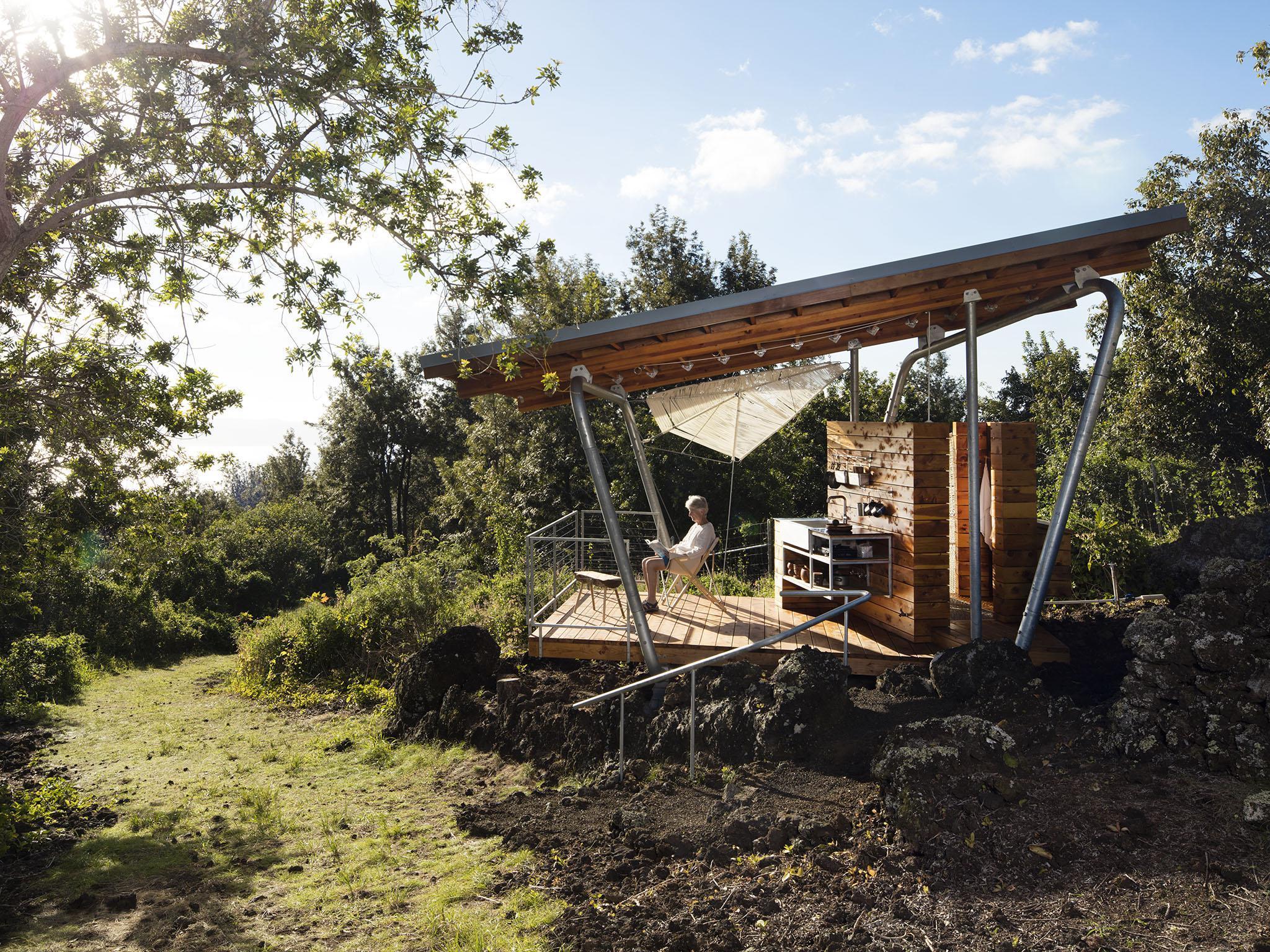Inspiring home of the week: Hawaiian cabin built on a 300-year-old lava formation
Aloha aina, Hawaiian for 'love of the land', is the inspiration behind two 'pavilions' straddling a 300-year-old lava flow on the island of Maui

Your support helps us to tell the story
From reproductive rights to climate change to Big Tech, The Independent is on the ground when the story is developing. Whether it's investigating the financials of Elon Musk's pro-Trump PAC or producing our latest documentary, 'The A Word', which shines a light on the American women fighting for reproductive rights, we know how important it is to parse out the facts from the messaging.
At such a critical moment in US history, we need reporters on the ground. Your donation allows us to keep sending journalists to speak to both sides of the story.
The Independent is trusted by Americans across the entire political spectrum. And unlike many other quality news outlets, we choose not to lock Americans out of our reporting and analysis with paywalls. We believe quality journalism should be available to everyone, paid for by those who can afford it.
Your support makes all the difference.As more and more designers look at “minimal living” concepts in housebuilding, one architect from the University of Oregon has created “The Outside House” on the island of Maui in Hawaii.
The home was built for a hospice worker and land conservationist who wanted an escape from her urban workplace. The house is designed to integrate the 300-year-old lava field it rests upon, even using the the formation as a natural staircase up into the home.
The house comprises two pavilions, one named Mauka (Hawaiian for “inland toward the mountains”), the other makai (meaning “seaward”). Mauka is made up of a tiny, enclosed detached bedroom orientated to look up the lava flow and catch the first light of sunrise. After that brief morning sunlight, the room is in cool shade for daytime reading and napping.
Makai is a roofed platform that shelters a deck, outdoor kitchen, and hidden outdoor shower, which are all open to views of the Pacific and the island of Kahoolawe.
We spoke to Erin Moore about how she took inspirations from the island for the project.
Please tell us a little about your practice: How big is it, when was it founded, etc.
It was founded in 2003 as part of my academic research practice.
What is your practice known for?
I am a faculty member in architecture and in environmental studies at the University of Oregon. In my work, I look at the way buildings reflect or reinforce cultural constructions of ideas of nature. In my design research practice, I use design to explore the human experience of ecological systems.
How would you sum up the project in five words?
A place to live outside.
What was the brief for this project?
The client is a hospice social worker and land conservationist who uses the higher-elevation Outside House as a cool-temperature retreat from work in town. She and her family started visiting this land in the 1960s. Her earliest memories of the place are of crawling through lava tubes near the now-endangered wiliwili, Hawaiian trees historically used for canoe floats.
The Outside House is intended to demonstrate the client’s ecocentric world view, a perspective that is rooted in the Hawaiian concept of aloha aina – love of the land.
What did you hope to solve as you designed this home?
That Outside House would be somewhere to live outside. Two small pavilions shape the basics of daily life and structure an intentional relationship with the land. The centre of the Outside House is the uneven, ever-changing ground between the pavilions. The unbuilt areas of the Outside House – lichen on the lava, a curved rock wall, a growing endemic mamane tree – are the essence of daily living in this place and what the client values most.
What challenges did you face in designing this home?
Maui, particularly at this elevation, can have unpredictable weather. The indoor part of the home we were concerned would get very hot during the daytime, so we positioned the build so the sun would only impact in the morning, and would be left in the shade so the client can keep cool during reading or daytime napping. Screened vents along the base of the north and south walls allow a comfortable amount of air movement and indirect light in the single room. Polycarbonate sheathing protects the roof and vents from the regular island rains.
What makes this space unique?
The Outside House is built as a point of connection between the client and the land she stewards in upcountry Maui. Inspired by FLOAT’s Watershed writing studio, the client asked for a building that would reinforce her connection with the place. In response, FLOAT designed two facing pavilions that straddle a 300-year-old lava flow.
What was your inspiration for this project?
In keeping with the client’s stewardship of the land, the pavilions are designed to be minimally connected to the ground and to be demountable. The Makai pavilion is a prefabricated, galvanised steel structure that was hand-carried, assembled by hand, and anchored to the ground with four threaded rods. The designer wove the shade panel and the shower enclosure with marine rope. The decking and cladding are milled from juniper, a tree that is harvested to protect ground water and habitat in the Pacific North-west.
Join our commenting forum
Join thought-provoking conversations, follow other Independent readers and see their replies
Comments